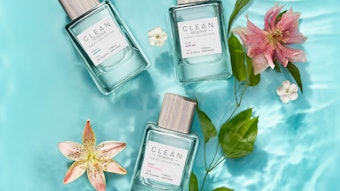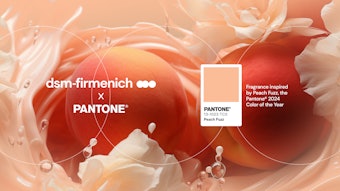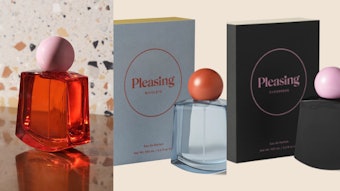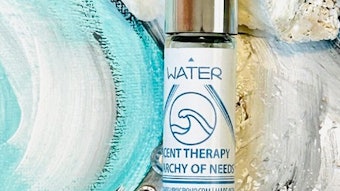GCI: How has fragrance marketing changed over the last decade, and how does a supplier or marketer anticipate the changes to come in order to continue helping brands to successfully market fragrances?
Judith Gross: There have been several major changes, and IFF has not only accompanied our customers in handling those changes, but sometimes has helped them anticipate the changes that were to come. One of the major elements that has changed in the marketing of fragrance is the explosion—in terms of the number of launches—with the constant need for newness on the market and the constant desire expressed by consumers, expressed by distribution, expressed by brands themselves to constantly have new propositions.
Another extremely important trend has been over the last 15 years, the increasing globalization, as well as [the] increasing concentration of our customers, which has led to the need for increased differentiation. And when that’s combined with more and more launches, differentiation becomes more and more difficult. So, IFF has anticipated and tried to give as many [options] as possible to its customers. IFF is a company that doesn’t simply manufacture fragrances, it’s a company that creates fragrances while understanding the emotional impact that fragrances have on consumers. Because when you think about it, sure you might go to a fragrance because of the brand. You might fall for an advertising campaign. You might think a bottle is gorgeous, but the reason—year after year—that you’re actually going to repurchase that fragrance and put it on your skin is because there’s an emotional connection that exists there, which you don’t find anywhere else. And if you don’t have that emotional connection—however good the advertising, the bottle, the color, the model, etc.—it just won’t work.
Marcy Fisher: So much has changed, yet the concept has remained constant—as marketers we must engage and excite our consumers ... the challenge for us is that she/he has many fragrance options and so many more places to learn about product. As marketers, we need to stay ahead of the curve to reach our consumers with new media, innovative product technology and intriguing product presentation.
GCI: When Juicy Couture launched in 2006, how far out did you look? Was there a sense of how the product would fit with scent trends over a period of time? How does a marketer consider both the current market and tomorrow’s?
Marcy Fisher: When developing fragrances, we focus on brand identity and emotion—the scent needs to express the brand concept. Fragrance trends allow us to explore the brand concept in innovative ways by providing a comprehensive library of notes that help evoke these complex emotions.
GCI: Is the partnership role the supplier plays key to the long-term success of fragrances?
Judith Gross: Absolutely. When you look at some of the longstanding IFF successes on the fine fragrance market—you know, when I think of products such as Trésor by Lancôme, products like Aromatic Elixir, products like Beautiful by Estée Lauder, products like Paris by Yves Saint Laurent, products like Organza by Givenchy or Polo by Ralph Lauren or Aramis, or Drakkar Noir by Guy Laroche—I’m really thinking of products that have created such a unique connection to consumers that however many fashion designers [play roles] in those brands, however many advertising campaigns, however many different changes in the bottle design even, consumers have consistently, year after year, renewed their vows and renewed their desire to stay emotionally connected to those fragrances. It’s not something that comes by chance. That emotional connection is not just generated by sheer intuition.
Of course intuition plays a very important part, and the fact that we have, at IFF, the most important [and] creative perfumerist team accounts for a huge proportion of that success, but the other reason is also the tool that IFF has constantly had the vision to build over the last 25 years, which leads us, today, to still being one of the major leaders in fine fragrance and to being able to deliver to our customers that expertise.
And those tools are tools that again help IFF and our customers understand what is the emotional connection that [they] have to fragrance, how to generate that emotional connection, how to identify the nature of that emotional connection and, therefore, how to steer the type of emotion that we want to create between a fragrance and consumer to something that makes sense for a given brand … for a given region, for a given category, etc.
GCI: How do you consider what’s going on in the market, how you’re serving marketers today and how you’re looking forward at the same time?
Judith Gross: That’s really where you can differentiate the role of fragrance house marketing versus brand marketing. On the brand side, marketing really is about product development and making sure that you identify within the brand the opportunities that ease you into developing a new product. On the fragrance house side, first of all, it’s a much broader definition of marketing in the sense that we are looking at all brands. We are looking at almost all product categories. We’re looking at all regions, and we are simultaneously working on brands that belong to each of the most important fragrance groups in the world and at the people that work on them.
So as marketers within a fragrance house, our role is to develop tools—marketing tools, which both help [to] understand and analyze trends; trends not only in their olfactive reality but also in terms of advertising signals, in terms of packaging and bottle signals, in terms of semantics. So brands is one level. The other level is: what are the current sociocultural trends which are [currently] affecting consumers’ tastes, and what are the emerging sociocultural trends that are strongly affecting and will strongly affect consumers’ tastes for fine fragrances in the future? And IFF has been at the forefront of the creation of several in-depth marketing inside tools, which help do exactly that, which help anticipate consumers’ future preferences—both from an olfactive standpoint, as well as from a marketing and from a sociocultural standpoint.
[This analysis] is something that we do in conjunction with our creative team, because the purpose of this is not just to supply marketing information, but to really nourish [a] creative development perfumery team and make sure that the marketing vision of this anticipation of future sociocultural or olfactive consumer trends is going to be feeding perfumerists’ creativity, and this is something they’re going to fly with to create the fragrances of tomorrow.
GCI: In a presentation called “The Forgotten Fragrance Consumer,” Barbara Preyssas, global vice president, Analysis Scent International, said that fine fragrances are competing in a new beauty world where everything has a significant fragrance. Do you agree? Is there competition between fine fragrances and say, a personal care product?
Judith Gross: I really don’t think I would call it competition—quite to the contrary. I think I would call it an amazing realm of new opportunities that present themselves to fragrance houses in general. This is especially true when you look at what’s happening in emerging countries—in Asia, in China, in Eastern Europe, etc. If you look at China, for instance, you have a country [that] does not necessarily have a strong fine fragrance cultural background but which has an amazing sense of using cosmetics, in general, as a conveyer of scent. I really don’t see this as competition—quite to the contrary. I think that women and men all over the world have very different relationship[s] to how they want to omit a fragrance, how they want to put a fragrance on them, and that this is something that IFF needs to understand, and, [again,] we have different survey tools that help us understand how a woman in China wants to smell like and how she wants put smell and scent on her, versus [a woman] in Russia, versus [a woman] in Brazil or France or the United States, and those are all very different. But IFF really sees this as new opportunities for fragrances rather than competition.
Marcy Fisher: What’s exciting today is that consumers are exposed to fascinating cultures and ideas everywhere they look! As fragrance marketers, we are challenged to have a point of view—sometimes that message is exciting for many people and sometimes it moves a more finite group. The emotions surrounding the Juicy Couture brand resonate with a broad group of women.
GCI: Does that change how you approach the creation of a fine fragrance?
Judith Gross: Well, it doesn’t only change the creation of fragrance. I think it also has a very strong impact on how we approach the creation of fragrance for beauty care, for instance. Because this is where some new things are really happening. When you have consumers in Japan who are going to use their hair care product as their fragrance, then you’re going to approach the way the perfumers develop the fragrance for the next big hair care range in a very different way than you would in France or in Italy, for instance. So it affects more beauty care development than it really does fine fragrance. The one way that it does affect fine fragrance is we constantly bring our customers new applications or new textures, new bases, new experiences that consumers can have of their fine fragrance products in order to make sure that there is a renewal of that experience, and that instead of the competition, it’s more of a synergy and layering, that would then harmonize how the different parts of your body can be used as a vector of fragrance.
GCI: Is the experience that that fragrance represents or fosters the ultimate goal of its creation?
Judith Gross: Yes. There are different ways that that word experience is used within IFF. One: we have within our sensory science department tools that enable us to understand the rendition of a fragrance on skin in different applications and in different bases, so that yes, you do measure the experience of a fragrance on a consumer based on the different applications that they would use. The second thing that it means is also that—not from a perfumery development point of view but more from a chemistry development point of view—our R&D center constantly works on new bases, new applications, new textures, because, again, it’s all about the experience and because having a new way to put fragrance on you can be the way to create a new emotional connection with a consumer.
GCI: How important is the overall concept and appeal of the brand itself to the success of the fragrance? Does a strong initial brand connection make a bigger impact for the release of a new fragrance or for that fragrance’s longevity?
Marcy Fisher: Consistant brand messag[ing] is key to a cohesive launch. Each product category provides [a] new opportunity to express unique facets of the brand identity—a strong brand connection absolutely helps create desire for these new products and categories.
GCI: In the online gaming world Second Life, osMoz is a virtual perfume island—a location where your avatar [online character] can visit and fulfill your fragrance fantasies—created by Firmenich. It’s the first of its kind and is one example of current and growing marketing strategies. What is the key to being both innovative and successful in marketing a fragrance? Are there one or two golden rules that can be applied across markets and segments?
Marcy Fisher: The golden rule is [to] know your brand, know your customers and be willing to take risks.
GCI: Euromonitor International states that premium fragrances are driving growth in both Western Europe’s and North America’s fine fragrance markets. Do you agree? Can it be expected that premium fragrances continue to be the key driver of these markets?
Judith Gross: Definitely, for several different reasons. One: we see at IFF that over the last two to three years, there has been a major shift in ... many of the brands we work with, which [are] going back to true luxury. Not only in the marketing dimensions but in the true making of the products themselves, [we have seen] licensed perfumers [who] like to use two luxurious materials, both naturals [and] chemicals. By creating products over the last two or three years that have justified, in a way, their incremental additional price, they have contributed to and will continue contributing to the growth. This is something that some of the biggest global luxury fine fragrance brands, that we work with have really understood, and we are now really strongly integrating, or reintegrating, in their marketing DNA.
Celebrity brands are much less relevant in Western Europe, with maybe one or two exceptions [like] the mass-market in Germany and mid-market in England. In those countries, what you really see generating growth are brands that have really recaptured their prestige image and have strongly rebuilt on it, or are rebuilding on it. As a sign of that, when you see that most fine fragrance brands have launched over the last two to three years, [the launches include] extremely high-end ranges, which happens with a much more limited distribution than the rest of their ranges with a much higher price point—with very different kinds of fragrance creation. This really contributes to the desire that brands have to upgrade their brand image in general and [ensure consumers that incremental price increases are legitimate] .... When you give consumers trust that the additional price that they will pay is justified by the quality of the product—then it’s a win-win situation. And when you look at the top 10 market in Europe, for instance, it’s very interesting to note that the most stable brands—the products which are growing with the best stability or in the most consistent way over the last year—are the brands that are actually the most expensive ones.
GCI: In “The Forgotten Fragrance Consumer” presentation, it was stated that fine fragrances are competing in a new beauty world where everything has a significant fragrance. Do you agree? How does this change how you brand, market and sell a scent? Does this actually provide other opportunities such as more strength in fragrance brand extensions—skin care, lotions, etc.? Is there more of an advantage for fragrance brands in competition from scented products?
Marcy Fisher: Scent is everywhere! Consumers now have very educated and broad fragrance palettes. Again, the success goes back to brand identity—our consumer is open to many more fragrance notes and products, which provides a great opportunity to convey the emotion in the most acceptable manner.
GCI: What is IFF’s assessment of the growth potential of fine fragrance, and what do you see for the market as a whole for both the short- and long-term?
Judith Gross: We’re very confidant that the earthquakes that have been shaking the fine fragrance markets over the last few years—the concentration that I was talking about, as well as the increased number of launches [and] what’s happening in beauty care—are really amazing opportunities for IFF to continue proving the understanding that we have of that emotional connection that fragrance makes with consumers... We really believe that [since] some countries now [have] access to luxury and access to self indulgence, which is what fragrance offers.
This is another major opportunity, and when I see the work that our consumer insider department has been doing over the past three years—in just what goes on in Russian consumers’ minds, for instance—I really see this as a great pocket of opportunity and growth both for IFF [and] for the fine fragrance world [in general]. It’ll be the same thing with Asia, [but] probably not at the same speed with all the Asian countries. China will probably not start with premium fragrances or fine fragrances, whereas, the beauty care segment will really have exponential growth over the next two to three years. So, there’ll be different speeds of growth outside of Europe and the United States, and it’s an amazing opportunity for our perfumers, also, to learn new things about markets that will inspire them probably in very different ways.
GCI: As those markets open up and perfumers experience those markets, do they explore more native raw materials for each of those markets or regions?
Judith Gross: Absolutely, and this is something that IFF has really both anticipated and has been wanting to build on extremely seriously over the last few years. Almost a decade ago now, [IFF acquired] a company called LMR [Laboratoire Monique Rémy], which was the Rolls-Royce of natural raw materials, I would say. If you asked any perfumer in the world where he would get the best rose, the best jasmine, the best narcissus—they would say at LMR. When it were purchased by IFF, [it began] to create crops with new materials, which have never been used in perfumery and which will probably contribute to enlarging the perfumers’ palettes. Another thing we do is [uphold] very key connections with some of our strong regional customers—in Brazil, in China, in other Asian countries [and] in Eastern Europe. We are also working with them on developing a very strong regional knowledge, which will also be based on regional inspiration and regional raw material inspiration.
Back to the February issue.










